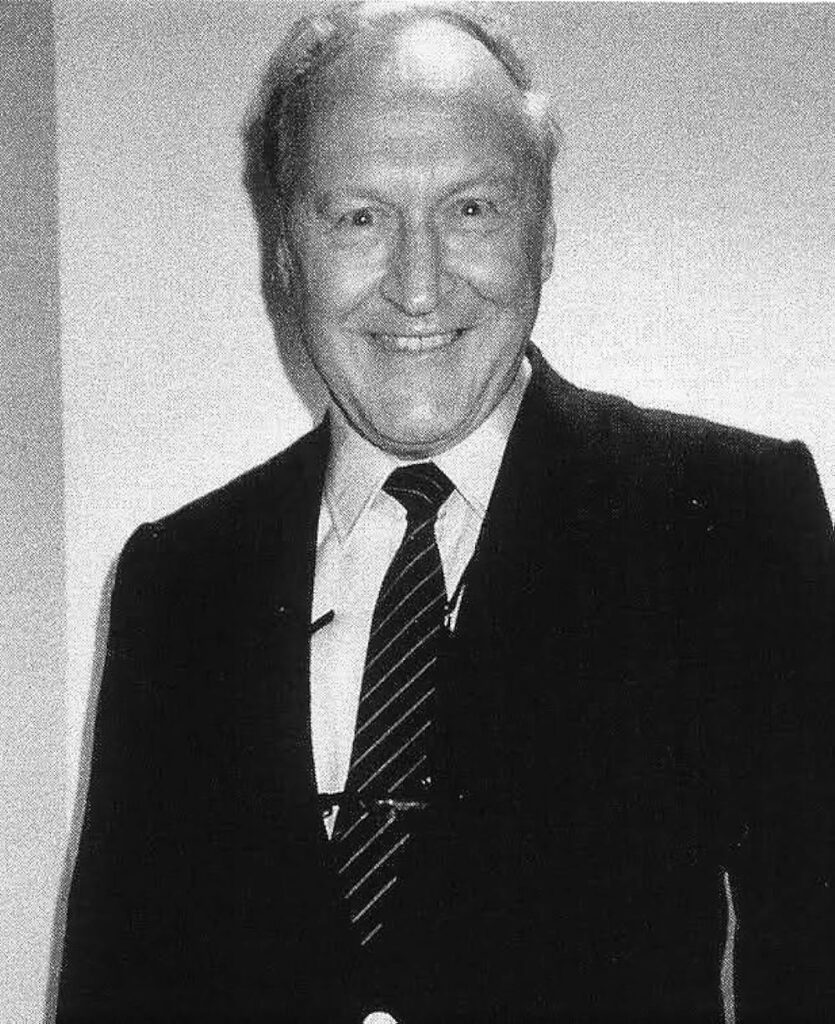
In 2022 I participated in the 100 Horror Movies in 92 Days Film Challenge for the first time. One of the main things I used it for that year was closing longtime gaps in my foundational horror knowledge. So, one lazy Thursday afternoon I turned on CARNIVAL OF SOULS. Everything about it pulled me in. The haunting chiaroscuro of The Man’s face as he glowers at Mary through the car window. Mary’s alienation and inability to connect in her new adopted town. The endless emptiness of the amusement park on the Salt Flats. CARNIVAL OF SOULS is a masterpiece, and I did more than understand its reputation. I felt it. One scene stuck out to me and led me to go down a research rabbit hole.
The famous opening sequence of the road race between Mary’s car and the boys felt familiar to me, as if it was speaking a language I hadn’t heard in some time. Then I placed it; the opening sequence was reminiscent of film strips I had been shown in health class in high school about the importance of safe driving. The whole of CARNIVAL OF SOULS is like a horror film that carries on after the end of a 1960s Driver’s Education scare video. I discovered that made perfect sense.
Herk Harvey didn’t just make one film. In fact, he was a prolific filmmaker, just not producing output for theatrical consumption. Harvey was Vice President of Centron Corporation in Lawrence, Kansas. Centron produced hundreds of industrial training films, educational film strips for use in schools, advertising materials and tourism films for Kansas and other Plains states. What makes this work especially compelling is that after the release of Psychotronic Video Guide and the Panorama Home Video re-release caused an explosion in interest in CARNIVAL OF SOULS in the 1980s, Harvey still said his work for Centron was what he was most proud of. When asked by a KTWU reporter in 1990 which work he favored he replied, SHAKE HANDS WITH DANGER.
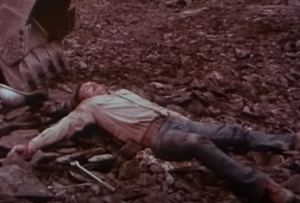
The resemblance of that opening road race in CARNIVAL OF SOULS to a cautionary drivers ed movie and Harvey’s answer in 1990 are what inspired our list here. Upon examination, the sensibilities that made CARNIVAL OF SOULS a classic existed throughout his work.
The first film I’d recommend to a horror fan looking to explore Harvey’s Centron output is SHAKE HANDS WITH DANGER. It’s a 1980 safety video commissioned by Caterpillar to warn against reckless use of their heavy machinery. With its tense, violent and darkly funny tone, the whole film effectively captures that sense of snickering at inevitable fatality 20 years before the first FINAL DESTINATION. In the film workers lose fingers and arms, catch fire, are impaled by flying shrapnel, and fall to their death. Each time before someone meets their fate a folksy guitar riff kicks in and Charlie Oldfather can be heard warning of the impending disaster. It’s been a late-night fixture on Turner Classic Movies for years and has inspired its own parodies. DANGER really is the Rosetta Stone that connects CARNIVAL OF SOULS to his industrial output.

There’s something evocative about the angry mob. Horror has known that the turning temperament of a crowd is something terrifying for years. From James Whale’s FRANKENSTEIN pictures to M. Night Shyamalan’s THE VILLAGE, to recently David Gordon Green’s HALLOWEEN KILLS we know that the rage of a crowd is often worse than whatever they’re pushing back against. That’s part of what makes Herk Harvey’s THE SOUND OF A STONE so effective. It opens on a shot of a stone skipping across water that wouldn’t look out of place in an Ozu or Bergman film. STONE lets us look in on the growing rage of a crowd against local high school teacher, Henry Jordan. As friends cancel plans and students withdraw from seeking his advice, we see Jordan’s own sense of confusion and isolation growing. Eventually, we arrive at a screaming angry mob at a school board meeting. Seeing this kind of crowd seeking to persecute a teacher in this setting unfortunately highlights the timelessness of Harvey’s work. The film even manages a knot-in-your-gut scare at the end, revealing a whole other reason it’s entitled THE SOUND OF A STONE.
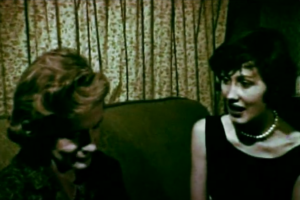
DANCE, LITTLE CHILDREN sits somewhere between IT FOLLOWS and CONTAGION in the feelings it stirs in the audience. Yes, it’s a 1961 educational film about the community dangers of sexually transmitted infections but it’s one that is mindful of the vulnerability and pressure facing teens. Early in the film we meet Lynn, who has just had sex with her boyfriend after a date at the country club. The dialogue, played straight and without bravado, outlines the class concerns for Lynn. Her family can’t afford to join the club and her mother sewed the dress for the date. We watch in horror as it becomes clear she only had sex because she thought it was the only way to maintain connection. Her ascent up the staircase, alone, with its deep shadows trailing behind, feels like something from a Hammer horror film. On the other hand, we have the story of a public health official trying to contact trace in an effort to stop a syphilis outbreak. He hits a roadblock when one of the teens he interviews sneers and refuses to name all of his sexual partners and can only casually describe the appearance of one. In a world still struggling with COVID and the importance of contact tracing fresh in our minds, the scenes read less invasive than they might have even a decade ago. The important part for horror fans is these twin tracks of storytelling are both handled with care that will scare and unsettle the viewer.

CINDY GOES TO A PARTY might seem counterintuitive based on some of these other suggested Harvey educational or industrial films. The three previously suggested films are all rooted in fear and horror by a straight line. CINDY GOES TO A PARTY is weird, self-aware and funny. It depicts a 12-year-old girl who believes that she’s been intentionally left off the invite list for a birthday party and is lamenting it the night before. Then, out of nowhere, a fairy godmother shows up who magics Cindy into a party dress and warps time to the following afternoon. The fairy godmother accompanies Cindy to the party and pops in and out of existence at opportune moments to give tips on party etiquette. This includes at one point spontaneously manifesting in a portrait of “Whistler’s Mother”. The surrealism of the proceeding is played with a wry wink and is different than most laughing done at old educational films. CINDY GOES TO A PARTY and Harvey know exactly what they’re doing. In that way it feels like comedic efforts of Jordan Peele or Ari Aster pushing comedy to a place of surrealism and discomfort.
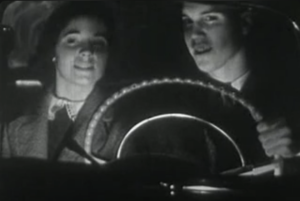
The last Herk Harvey film I’ll suggest is one with an eye toward why we might be interested in exploring his other work at all. In that respect NONE FOR THE ROAD feels like a prequel to CARNIVAL OF SOULS. In the film three young couples meet at a local diner for a date night. We cut to a doctor in a lab coat who tells us to think of two items: a bracelet charm of a four-leaf clover and a syringe with alcohol. Over the next fifteen minutes we are treated to intercut footage of the young couples enjoying themselves and the doctor in the lab testing the reaction speed of rats injected with alcohol. We see that one of the drivers is not drinking at all, one has had a few beers and the last is, in the words of the narrator, “holding it down.” Eventually the three couples depart, and we follow the pair with the driver who has had nothing. In the rainy night they come across snarled traffic and the bright lights of police. The driver announces he’s going to get out and go offer assistance to police and EMTs. We follow him as he moves closer to the twisted, Cronenbergian wreckage when he finds beside the wreck the loose bracelet charm we saw earlier. This is really where NONE FOR THE ROAD and CARNIVAL OF SOULS intersect. Both feature late film reveals about tragic car accidents, and one explicitly admonishes viewers to be careful behind the wheel while the other implies it.
The lure and charm of Harvey is that sickening sense of “They should have known better.” It’s easy to say that about industrial and educational filmstrips from sixty or seventy years ago but consider how often we chide characters when watching horror for running up stairs when chased, inviting in obvious vampires or venturing down into darkened cellars alone. They scare us by showing the consequence of transgressing and then reassure us that we know enough not to—a sensation that all of Harvey’s work has in abundance.
Tags: Brian Cartwright, Carnival Of Souls, Carnivals, Cars, Cult Classics, Ghosts, Herk Harvey, Independent Cinema, Kansas, The 1960s, The USA

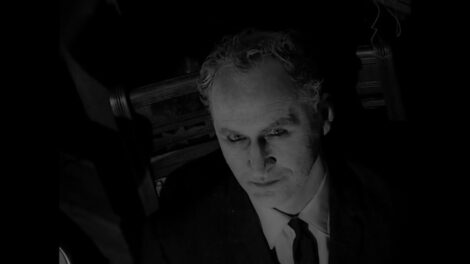

No Comments